|
Maqâm-e Delkash: A Comparative Look at the Concept and Characteristics of Maqâm in Persian Dastgâhi Music
Ârash Mohâfez Originally published as “Maqâm-e Delkash: Negâhi tatbiqi be mafhum va khosusiyât-e maqâm dar musiqi-ye dastgâhi-ye Iran.” Faslnâme-ye Musiqi-ye Mâhur [Mahoor Music Quarterly] 53, 2011, 105–142. Draft translation: Leyla Rasuli, copy-editing: Kristen Wolf. 1. Introduction At the present stage of Persian classical music life – i.e., a stage in which the most important scientific and theoretical challenge is to find ways to innovate in order to break free from the content stagnation and aesthetically static state of Qâjâr art tradition – initiating discussions on the theoretical foundations of Persian classical music, in general, and the technical details of the musical system of radif (or radifs), in particular, might not seem to be the best subject for research. This subject appears even less interesting when one remembers that there are as many theories, analyses and classifications as there are renowned scholars, prolific researchers and even interested students. Apart from the commonly agreed issues, a general comparison of the more prominent works shows that there is not much disagreement among authors regarding a large proportion of the problematic theoretical foundations; the disagreements in the perception of Persian music exist mainly due to unstandardized terms and a lack of unified theory. In fact, only a small proportion of the theoretical foundations are either truly disagreed upon or were not initially a part of discussions. This lack of inclusion was a result of excessive concentration on existing theories, which have failed to take such foundations into account. Perhaps, without actually sensing it, these general theoretical weaknesses are barring us from reaching a common understanding and a practical consensus on how to give a fresh breath to Persian classical music. When there still exist some aspects of the phenomenon, which are more or less unclear, the ways of modifying it will also remain unclear. This paper does not intend to critique different theories on dastgâhi music. Instead, through a comparative view of the concept of maqâm in two neighboring cultures and subsequent analysis of the musical structure of a particular example from Persian music, maqam-e Delkash, the attempt is made to share a personal, and slightly different, perception of the function of the dastgâhi music system with the theorists in the field. Furthermore, through presenting conceptual suggestions and clarifying the function of various musical features, the aim is to contribute, albeit to a limited extent, to the standardization and development of an ideal unified theory.
Even today, Persian oral musical culture does not seem to make a real distinction between dastgâh-e Homâyun and maqâm-e Homâyun, for example, and there are some works in the literature, which directly or indirectly, consider the two as equivalent. However, it is hard to doubt that most researchers in the field of Persian classical music know the dastgâh as a “multi-modal cycle” (cf. As’adi 2003: 46). Accepting this single characteristic will immediately lead to a slight distinction between the concept of dastgâh and the quintessential meaning of maqâm, as it is understood in Turkish and Arabic cultures. As we all know, ethnomusicological sources today define the concept of “mode” generally as a tonal entity which consists of a particular combination of elements, such as: 1) musical scale, 2) degree functions and their functional classifications, 3) ambitus, 4) movements and melodic progressions and tendencies, 5) typical melodies and the degree of their significance, 6) ethos, 7) ornamentation, 8) rhythmic structures, etc. Now let’s compare this definition of mode with the factors constituting the maqâm concept in one of the classical music traditions neighboring Iran. This is a tradition that has continuously preserved such a musical system for at least three or four centuries. The results from indigenous theories and ethnomusicological research on the musical practice of the Turkish-Ottoman tradition, such as the studies by Yekta (1921), Özkan (2007), Signell (1986), Feldman (1996) and Wright (2000) show that the identity of an individual Turkish maqâm, without modulation, is generally the result of interweaving of the five fundamental elements, namely, a scale, degrees functions, melodic progression, particular melody-types, and musical texture. It should be noted that Turkish or Western researchers have not tried to adjust the modern definition of mode to this Eastern tradition. Instead all of these characteristics, and even the less concrete issues such as melodic progression and musical texture, with quite similar local terminologies, have been indigenously theorized, classified and practically taught, constantly, at least from Cantemir’s time (18th century) until the present artistic tradition.
Even without entering the detailed discussion of comparing the number and types of the employed tetrachords/pentachords and the issue of the interval nuances in the Persian and Ottoman traditions, there seems to be a consensus about one thing: the scale of each maqâm in the dastgâhi music, just like the scale of its Turkish counterpart, is made up of a tetrachord plus a pentachord or vice versa. In different maqâms, the structural tetrachord and pentachord can be homogeneous or heterogeneous. The fact that the central core of some Persian maqâms is sometimes heard as a single tetrachord or even a trichord seems to be the result of a sort of “laziness” in realization of the concerned melodic progression. In these cases, melodic clichés of the maqâms in the particular aesthetics of radif do not use the octave space rapidly. But, this is something that should not be attributed to the essence of maqâm in the Old tradition because in apparently Persian styles older than radif, even the very first stage of stabilization of each maqâm is generally done through expanding in a space of about one octave. The opening phrase of pishrow-e Shokufezâr by Hassan Jân (Kantemiroğlu 2001, vol. II: 53), a composer of Iranian origin, or the opening of the piece kâr dar Maqâm-e ‘Ajam ascribed to Abdulqâder Marâghi (Göyenç 2009), are good examples in this regard. Therefore, contrary to some assumptions, stabilizing the maqâm before its stages of development to the interval of an octave, and even using long passages and long melodic jumps, depending on how they are used, can be totally unrelated to the recent influences of Western music and an entirely traditional behavior. Another point about the maqâm scale, which is implicit in Turkish theories and can be true for the Persian maqâm as well, is the distinction which should be made between the two concepts “scale” and “ambitus”. The octave scale of each maqâm forms the “minimum structure” and main foundation of sounds and intervals, i.e., musically said, the characteristic mode or çeşni (taste) of that maqâm, whereas the ambitus of each maqâm, depending on its unique character in different stages, can be developed to a great extent, going down starting from the lowest note of the primary scale or going up starting from the highest note of the scale, with the primary tetrachord-pentachord system either preserved or changed. Naming the potential scale’s degrees in Persian classical music with the French names of the scale degrees (Do, Re, Mi, Fa, Sol, La, Si) and inventing half-breed expressions to refer to the playing positions of maqâms and dastgâh-s, such as Mâhur-e Do and Segâh-e La koron[1], is one of the weaknesses of the current theoretical foundations of Persian music. This is especially the case when we know that in the past, in the Persian musical culture, some contrivances were thought to deal with such issues. The Systematist School named the scale’s degrees with Abjad letters based on a particular rule, and later this method was gradually replaced by a type or types of nominative degree systems. Eventually, as the solid documents by Tanburi Harutin show, in the first half of the 18th century, the Persian court musicians named the principal degrees of an octave, respectively, from the lowest to the highest: Yegâh, Dogâh, Segâh, Châhârgâh, Panjgâh, Sheshgâh, Haftgâh, and Hashtgâh (cf. Popescu-Judetz 2002: 101, 131). The other degrees between the principal degrees in the Persian musical scale of that time might have had their own names which Harutin did not mention. But we know that in the same century, Cantemir referred to all degrees of the Ottoman musical scale with their specific names. Since there are a lot of similarities between the names of Cantemir’s “principal degrees” and those of the Persian scale, it is likely that at least some names of his intermediate degrees are the same as the Persian names of their 18th century Persian equivalents. The system Cantemir referred to is to some extent still in use in Turkish art music today. The writer believes that after stating the position of the dastgâh-s in relation to each other and with collective consensus, such a system can and should be revived in today’s Persian music. In such a system, each degree has a particular name, and additionally, it should be determined on which degree the main position of each dastgâh, known as its “râst-kuk”, is formed, for example, dastgâh-e Râst on Yegâh degree, Shur on Dogâh degree, Segâh on Segâh degree, etc. After this codification, other local technical terms can be used to refer to transposed forms of dastgâh-s and various modulations, for example, dastgâh-e Shur on Panjgâh degree or modulation to Esfâhân on Dogâh degree.
Each Turkish maqâm can only have one of the three general directions of “ascendant” (çikici), “ascendant-descendant” (çikici – inici) or “descendant” (inici). The ascendant maqâm starts in the low register of the scale, near the final degree of the maqâm, gradually develops upwards, and finally cadences in the beginning point. The ascendant-descendant maqâm begins about in the middle of the scale, near the dominant degree of the maqâm (which may be the third, fourth or fifth degree of the final tone), and after developing relatively upward finally cadences on the conclusive tone in bass. The descendent maqâm’s progression begins from the highest tonal areas of the scale, near the octave of the final, stays in that area, then gradually moves downwards and finally cadences on the final degree in bass. It seems that before the elaboration of radif, individual Persian maqâms, implicitly and practically, also had such a characteristic criterion. Later, this very criterion provided an underlying but specific algorithm for the late design of the radif dastgâh-s. This descriptive classification seems to be true for the Persian system as well, and it thus can theorize all existing maqâms in the heart of dastgâhi system with respect to the melodic direction: all primary or main maqâms of the dastgâhs, like maqâm-e Shur in dastgâh-e Shur, maqâm-e Mâhur in dastgâh-e Mâhur and maqâm-e Segâh in dastgâh-e Segâh, are definitely ascendant maqâms. Ascendant-descendant maqâms are the intermediate or secondary maqâms of each dastgâh, such as Shahnâz, Delkash, Bidâd, Zâbol, Mokhâlef, Nahoft, Shekaste, Bayât-e Râje and Panjgâh. They follow the main maqâm and somehow begin in the middle of its scale, near its dominant degree. After developing, they cadence on the final of the main maqâm. It should also be mentioned that what we know as âvâz, such as âvâz-e Abu’atâ, âvâz-e Dashti, âvâz-e Bayât-e Kord, âvâz-e Bayât-e Tork, âvâz-e Afshâri and âvâz-e Esfâhân, is nothing but a maqâm which has been independently interpreted, perhaps due to its greater importance in comparison to those maqâms incorporated in the seven dastgâhs. All these types of maqam, i.e., âvâz-s, are also obviously ascendant-descendant ones. One might argue that âvâz is also “multi-modal” since, for example, Afshâri modulate to ‘Arâq, Dashti contains Owj, Bayât-e Tork contains Shekaste, Abu’atâ has Hejâz, etc. Firstly, even if such an argument is right, being “multi-modal” is of much less significance and is less felt in an âvâz compared to a dastgâh, and the number of modes generated in an âvâz is also less than a dastgâh’s. Generally, in an âvâz, a maximum number of two or three modal spaces are formed rather close to each other, whereas in a dastgâh, there may sometimes be more than six different and more or less contrasting maqâms, and the modulations in dastgâhs are on the whole considered “less smooth”. Secondly and more importantly, a distinction should be made between the melodic development in the upper limits of the maqâm and the modulation of a maqâm into another one. For example, the Turkish maqâm Huseyni, which is similar to Persian âvâz-e Dashti and âvâz-e Hoseyni, and the Turkish maqâm Beyâti, which is similar to Persian âvâz-e Abu’atâ do not permanently stay in the primary mode, but gradually form an ascension toward an apogee, like the apogee of gushe Owj for Persian Dashti. However, these ascending movements, which are not really revolutionary and can definitely be accompanied by some changes in the scale and modal centers, are generally regarded as melodic development and a part of the predetermined identity of the same maqâm rather than modulating to a new maqâm. The writer believes that, apart from examples such as the modulation to Shekaste in âvâz-e Bayât-e Tork, most of the modal changes within the structure of âvâz-s of Persian radif are intra-maqâm developments rather than modulating changes; therefore, we prefer to consider the current Persian âvâz-s as “sizable maqâms” rather than “small dastgâhs”. Apart from this, the last category of radif maqâms such as Hoseyni, Maqlub, ‘Arâq, Râk, Mansuri, Nowruz (in Homâyun and Râst-panjgâh), which are more or less formed in the Owj (apogee) of the dastgâh, can be considered as descendent maqâms. After the exposition of their primary cores in the apogee of the scale, they always cadence on the final degree of the dastgâh’s main maqâm. But what is the second aspect of the concept of seyir, i.e., the codified melodic progression, in the Turkish theory? The codified melodic progression (seyir) is the map and the main track of melodic behaveiors in a maqâm at different stages of forming, developing and returning with respect to the function of the principal degrees of the scale (but without innovative modulations). The principles of melodic progression of each maqâm in the Ottoman tradition, contrary to what is sometimes thought, are not so flexible; they are generally fixed, but can be practiced in different ways and more freely in some other aspects (to be discussed). The Turkish sources describe this codified melodic progression in two methods: the first method, which can be traced back at least to Cantemir’s time (cf. Kantemiroglu 2001, vol. I: 48–111), is the verbal description in which the writer in text or the teacher in speech explains what degree a maqâm begins on, where it then moves, which degree it emphasizes, and which maqâm it touches, etc. The second method is modern and is about composing very short “music-models” which, in brief and in a few measures, introduce to the reader or listener all the stages of maqâm progression. As an example we can refer to around thirty progressions which Rauf Yekta suggested in his 1921 Lavignac article for identifying maqâms (cf. Yekta 1921: 2997-3010). For an Iranian musicologist it is obvious that all his radifi maqâms have a fixed, algorithmic and quintessential codified melodic progression and can and should be theorized in an instructionally practical way – contrary to Walter Feldman’s opinion, for example. Feldman implicitly considers the development of the codified melodic progression as an innovation and a simply Ottoman characteristic (Feldman 1996: 278). The concept of melodic progression should by no means be mistaken for or mixed with the melody-types of radif maqâms. The melodic progression is the formula, i.e., the algorithm, of forming a maqâm, whereas the melody-types are the materials that are included in this formula or algorithm and constitute music. We shall explore this relationship more concretely in the section that analyzes maqâm-e Delkash. Yet what can be put forward as a hypothesis is that from a musicological point of view, the scheme of constructing or codifying the radif involves a basically close idea to what is considered the new or “the second method” of teaching seyir-s in the Ottoman musical tradition, i.e., teaching and consolidating the concept of melodic progression through a “purposeful intense music-model”. The difference is that the radif is older than this Turkish method, the expressive form of its main part is a “taqsim-like” form with free rhythm, and more importantly, the magnificence and distinctive artistic quality of its construction can by no means be compared to the simple seyir-s as Yekta, for example, had proposed. When Cantemir points out that the Persian musicians teach their taqsim-s “combination by combination” (cf. Feldman 2007: 153), he can be referring to the radif, and this can indicate that this large collection, which has introduced and stabilized the progression of each and every maqâm in the form of the broader progression of dastgâh-s as individual artistic models, was either completely or partially shaped in the 18th century.
In fact, it seems that in forming the Turkish maqâm, after the innovative and compelling modulations – which are truly expected from “a competent musician” as qualitative criteria specifically while performing a taqsim – choosing or composing the musical material to melodize the progression, while respecting common aesthetic standards, is the second area which is to a great extent free and left to the personal taste of the improviser or composer. On the contrary, in the construction of the Persian radifi maqâm, the melody-types are as “ready-made” and “repetitive” as the melodic progression, and this is the reason these two phenomena are irritatingly blended in many Persian theories. With a bit of exaggeration, one can claim that in the “improvisations” and “compositions” of the current style of Persian classical music, there are not usually a lot of new materials or melodies; rather, there are an infinite number of variations of fixed materials adjusted to the different situations of the set progressions. On a large scale, this seems to be the most important difference in maqâm formation between the Persian and Turkish versions. It also appears to be the direct result of employing a phenomenon known as radif, not as a “progression-model” of the dastgâhs’ maqâms – which might have been the intention of its original designers – but as a sacred repertoire of the only tunes inherited from the past for being remade in the form of improvisation or composition based on it. With regard to their dispersion rather than their physical character, the radif melody-types can be divided into three categories: those specific to a particular maqâm of a dastgâh or a particular independent maqâm, those specific to a dastgâh which are employed several times through the exposition of its maqâms, and those which move in the entire radif and can appear at any position. As we analyze maqâm-e Delkash, some concrete examples of this categorization are seen. But a single point remains: the term melody-type is usually considered the same as the term “gushe” in the Persian theories. And this, the writer believes, is not right. Musical analyses can help us come to the conclusion that the division of “gushe-s”, being presented in a sequence within a dastgâh, is vague and has not been organized based on “a fixed qualitative and quantitative criterion”, either originally or by the interpreters. In the existing radif-s, a gushe can consist of a single melody-type and form a whole musical sentence or a part of it; it can contain several melody-types and again express a whole sentence or a part of it; or it can consist of several melody-types and not only one or more whole sentences but also a complete progression of a maqâm. Therefore, general categorizations, such as “rhythmic gushe”, “prosodic gushe” and “tahriri gushe”, though true in some cases, are in many cases only a part of what a gushe involves. For example, a gushe may begin with a rhythmic melody-type, immediately followed by a tahriri melody-type, and is still the same gushe. Therefore, a gushe comprises melody-types; and it is the melody-types that should be categorized first based on their forms. Through finding the rules and possibilities of their combinations in the context of different gushes, we can have the classification of “gushe-types” as well.
In our opinion, the large body of dastgâh-e Mâhur in all three radif-s is formed from seven woven together maqâms: the primary and principal maqâm is maqâm-e Mâhur and the six secondary maqâms which are formed relative to it, or referring to it, are maqâm-e Goshâyesh (or Âvâz or Dâd), maqâm-e Delkash, maqâm-e Shekaste, maqâm-e Hesâr-e Mâhur, maqâm-e ‘Arâq and maqâm-e Râk. The musical scale of maqâm-e Delkash is made up of a Mâhur penthacord plus a Shur tetrachord on C (= tonic of Mâhur). But the tonic of the maqam-e Delkash is on the fifth degree of Mâhur’s tonic, i.e., G. In this maqâm the F degree is a suspended stop and the A koron/natural is a variable degree.
The upper ambitus of the maqam-e Delkash, in cases of the development of the basic core, can go higher by about a fifth from the highest note. The lower ambitus, which is particularly used at the cadence into maqâm-e Mâhur and the ending points of Delkash progression, can be expanded even by an octave lower than the tonic of Mâhur.
4.1 Position and Combination of gushe-s of maqam-e Delkash in three instrumental radif-s
One of the most artistic logics that the original and seemingly unknown “designers” of radif employed in linking the different internal maqâms of a dastgâh is that the new modal and structuring formulas and principles of the secondary maqâms of each dastgâh, which successively follow each other through its general progression, are always formed somehow on the basis of the earlier modal principles and are woven on them with the least friction. The qualitative thoroughness, formal homogeneity and aesthetic uniformity through the entire radif is obvious proof that the musicians who first presented such a repertoire have definitely done more than simply compiling it. Moreover, another credible aesthetic logic in the radif-s can be theorized: the emergence and stabilization of new principles of a secondary maqâm in a dastgâh never abolish the principles of the earlier primary maqâm and the secondary ones, but are added to them. The practical manifestation of this logic is particularly observable in the return from a secondary maqâm to a primary maqâm of a dastgâh, which occurs in two general ways: in one the return from a secondary maqâm of the dastgâh to the primary one is a direct return with no other secondary maqâm mediation, and in another the return is an indirect one with the mediation of the flavor of one or more secondary maqâms. In both cases, through the unifying returns of the progression in the dastgâh, the modal principles of the primary maqâm and the mediating secondary maqâm or maqâms remain identical to their earlier state when they were introduced and stabilized through the exposition of the ascendant progression of the dastgâh. The only difference is that the modal principles of each maqâm, when they are first presented in the ascendant progression of a dastgâh, are expressed elaborately and in detail, but during the returns or cadences only those parts of them with naturally more conclusive forms are mostly used individually and briefly. Unknown designers of radif used some composition techniques to conjoin maqâm-e Mâhur and maqâm-e Delkash in the heart of dastgâh-e Mâhur. It should be noted that there is a relative homogeneity of the raw musical material used in maqâm-e Mâhur and maqâm-e Delkash. Also, the modal links between these two maqâms, or the way in which the latter is formed on the basis of the modal principles of the former with the least friction, are observable in the very basic selection of modal centers or polarized degrees of the latter. On the one hand, the tonic or the modal center of Delkash, that is G, is the fifth degree of the tonic in maqâm-e Mâhur, and on the other hand, in the principles of sentence structure of maqâm-e Mâhur, functions as the most important temporary stop. For these two significant reasons the melody-types adjustable to maqâm-e Mâhur frequently employ the G before and after the tonic. The temporary stop of maqâm-e Delkash, that is F, on the one hand, is the fourth of the tonic in Mâhur, and on the other hand, is one of the most functional and emphasized degrees, particularly through the development stages of maqâm Goshâyesh, the second maqâm of the dastgâh. Thus, both principal degrees which make the mode in Delkash have been stabilized and suspended again and again before the emergence of this maqâm in the pre- Delkash progression of dastgâh-e Mâhur, and therefore, sound completely familiar to the ear. Hence, in spite of the sudden appearance of the accidental A-koron in the beginning scale of Delkash, the shift of maqâm-e Mâhur into Delkash sounds like a relatively smooth modulation. We do not clearly know whether the musical whole of what is known as Delkash today, apart from its name, was one of the standard modulations of old maqâm-e Mâhur or whether it was considered an independent maqâm in the pre-radif era. We also have no knowledge of whether the designers of radif found the fifth degree of the scale of Mâhur a better position for it compared to the other six dastgâhs, or it was the creators of radif who made such a maqâm for such a position in dastgâh-e Mâhur. But aside from the question of which of these possibilities is closer to reality, what is clear is that the general aesthetic filtering for modulations to be smooth, even in the dastgâhs, is to some extent also employed here, just like an extensive proportion of other modulations of the radif. The most important way of producing such an effect is avoiding very contrasted changes in the degrees’ functions and maintaining maximum similarity between the scales of the first and second maqâms. Of course, it is worth mentioning that weaving the maqâms together with minimum possible friction is not necessarily a value, and perhaps in another style juxtaposing the maqâms which are in contrast with each other would be more impressive and pleasurable. Therefore, one of the most artistic logics mentioned only emphasizes the fact that when a single unified aesthetic point of view is applied to almost 400 musical pieces, clearly we are not dealing with a process of random collection of melodies. Behind this material organization there has been a codified plan and a conscious scheme. Otherwise, the remaining works from the older Persian musical styles help us to determine that such a filter was never used so forcefully before radif, and sometimes even acting contrary to this logic had been considered an aesthetic criterion.
The codified melodic progression of maqâm-e Delkash can be explained in two main stages: 1) Stabilization and development of the core of the maqâm, which is formed around the G tonic, and 2) cadence from this range to the primary maqâm of the dastgâh and its conclusive degree. Comparing the melodic logics employed in the three interpretations under discussion shows that each musical sentence in the core of maqâm-e Delkash is formed by juxtaposing several “melodic blocks” each of which has a completely specific melodic function. By melodic block we are referring to an empty frame which should take in or carry a melody-type or musical material and shape and arrange it to fulfill its specific function. If these modal functions are considered as a classification criterion, four types of melodic blocks can be identified through the entire maqâm-e Delkash:
1. Type 1 Melodic Blocks: their function is to focus the musical material mainly on the tonic of Delkash, that is G, then repeatedly emphasize and eventually end on this very degree. While developing, these blocks use the upper G and Shur tetrachord, but in any case they end on the same degree, which is the tonic of Delkash. 2. Type 2 Melodic Blocks: they begin with emphasis on G, but gradually descend on F as the suspended and temporary stop. This call/response form between G and F may be repeated several times, but the type 2 melodic blocks finally stop on F. 3. Type 3 Melodic Blocks: their single function is to stabilize the suspended stop on F. 4. Type 4 melodic Blocks: their function is to return the music suspended on F back to the core of maqâm-e Delkash to be continued in the same domain. The arrangement of these four types of blocks for making each sentence in maqâm-e Delkash is totally based on a fixed and determined rule; first, one, two or three type 1 melodic blocks run the music in maqâm-e Delkash, then only one type 2 block takes us from the heart of the magnet of the tonic G, towards the lower neighbor, F, and eventually one or two type 3 blocks finish our sentence in the core of the maqâm with more emphasis on the suspended stop, F. This last stage of making the sentence, which ends in type 3 blocks, can be completely excluded, and therefore its existence in the sentence-making formula is not crucial. The following diagrams demonstrate all arrangement possibilities for the melodic blocks used in making the sentences of maqâm-e Delkash in the three instrumental radif interpretations:
At this point of the maqâm progression, there are two different choices for the radifs: in Mirzâ ‘Abdollâh and Hoseyn Qoli’s interpretations, gushe Châhârmezrâb is immediately started; however, in Ma'rufi’s, before starting Châhârmazrâb, another sentence is arranged based on the aforementioned rule for the purpose of further development. Next, with a return block, it returns to the point where the other radifs were situated before Châhârmezrâb. The whole Châhârmezrâb, which is introduced everywhere as a gushe, is in fact nothing more than a long type 1 melodic block, since its chief modal function is to emphasize, repeat and stabilize the G degree. This block is practically the beginning of the last musical sentence in the core of maqâm-e Delkash, and thus different types of blocks after it will again be juxtaposed in different ways all based on that single sentence-making rule till the sentence ends on the stop F. What marks “being the last sentence in the core of maqâm-e Delkash” at this point of the progression is the fact that after this ending, there are no other return blocks performed in the G range to develop the maqâm. What happens from this point on in the progression of maqâm-e Delkash is the beginning of the second main stage, i.e., a series of actions which are done by an essentially descendant process in order to establish a link between itself and the main maqâm of dastgâh-e Mâhur. The radif style involves a single specific plan for this point in all the secondary maqâms of all dastgâhs: we propose to call it “intermediate cadence (forud-e miyâni)”. Each secondary maqâm of the radif’s dastgâhs has a kind of specific intermediate cadence of its own. Each cadence involves one or more melody-types which are to a great extent fixed and whose function is to receive the music from the edge of the core of the secondary maqâm and lower it towards the main maqâm of the dastgâh. Earlier, it was pointed out that this path can be a direct or an indirect one. In the three interpretations focused on here, maqâm-e Delkash descends towards maqâm-e Mâhur through an indirect path. The Delkash intermediate cadence lowers the music to the modal range of D, and from that point on, the rules of maqâm-e Goshâyesh are dominant again. The progression of the interpretations shows that at this stage, the performer can stay in the Goshâyesh space for several musical segments or immediately follow the descending process, depending on his or her taste. From here, based on the aforementioned stylistic aesthetics, the only way of descending is again through using the intermediate cadence particular to the maqâm we are in, that is “the intermediate cadence of maqâm-e Goshâyesh, which this time directly enters the space of the dastgâh’s main maqâm. At this stage, again, some segments can or cannot be expressed, but the ending point to our descendent process is letting “the closing cadence of maqâm-e Mâhur be heard. Again, like a stylistic rule, the main maqâm of each dastgâh has one or two fixed and cliché melodies which function as final melodic cadences and have the heaviest load to close the maqâm. These final cadences are always heard at the end of the main maqâm’s progression as well as at the end of the cadence from each secondary maqâm into the main one. Therefore, we are not exaggerating if we say that the idea, design and the way we use different types of intermediate and final cadences is the most important unifying element of a dastgâh and the main pillar relating the different maqâms based on a more significant chosen one. Therefore, the progression of our maqâm-e Delkash, as interpreted in the radifs, is considered complete only when the descending process ends in the final cadences of maqâm-e Mâhur. Based on what happens within the radif-s, the entire codified melodic progression of maqâm-e Delkash can be summarized as follows:
4.3.1 Delkash melody-type (appearing in gushe Delkash of all three interpretations)
Therefore the melody of Delkash very well fulfills the modal objective of a type 1 block, but more than that, it quickly demonstrates the relationship of maqâm-e Delkash with the receiving beginning point of the dastgâh. Perhaps it is because of this particularity that the melody under discussion begins and primarily introduces this new maqâm within the general progression of dastgâh-e Mâhur. Now see this melody-type in Âqâ Hoseyn Qoli’s interpretation, preserving all the discussed features: what is different is the partial variation of the motifs inside each segment, but no new functions, movements or processes are seen compared to the previous version[4]:
4.3.2 Tahrir-e Dâd (appearing in gushe Delkash of the three interpretations)
4.3.3 Tahrir-e Âvâz Melody-type (appearing in gushe Forud of Mirzâ ‘Abdollâh & Âqâ Hoseyn-Qoli’s, and in gushe Delkash of Ma'rufi’s)
4.3.4 Abu’atâ Melody-type (appearing in gushe Delkash and Forud of Mirzâ Abdollâh’s, gushe Forud of Âqâ Hoseyn Qoli’s and gushe Delkash of Ma'rufi’s)
4.3.5 Bâzgasht (return) melody-type (appearing in gushe Delkash of Mirzâ ‘Abdollâh and Âqâ Hoseyn Qoli’s, and in gushe-s Delkash & Hâji Hasani of Ma'rufi’s)
4.3.6 Stabilizing F suspended stop Melody-type (appearing in gushe Delkash of Mirzâ Abdollâh and Âqâ Hoseyn Qoli’s, and in gushe-s Delkash & Hâji Hasani of Ma'rufi’s)
4.3.7 Kereshme Melody-type (appearing in gushe Forud of Mirzâ Abdollâh’s and gushe Delkash of Ma'rufi’s)
4.3.8 Tahrir-e Hâji Hasani Melody-type (appearing in gushe Delkash of Mirzâ Abdollâh’s, gushe Forud of Âqâ Hoseyn Qoli’s and gushe Hâji Hasani of Ma'rufi’s)
4.3.9 Châhârmezrâb Melody-type (appearing in gushe Châhârmezrâb of the three interpretations)
4.3.10 Intermediate Cadence of maqam-e Delkash (appearing in gushe Forud of Mirzâ ‘Abdollâh and Âqâ Hoseyn Qoli’s and gushe Hâji Hasani of Ma'rufi’s)
4.3.11 Melody-type of tahrir of maqam-e Goshâyesh Range (appearing in gushe Forud of Mirzâ ‘Abdollâh’s and gushe Hâji Hasani of Ma'rufi’s)
4.3.12 Melody-types of Intermediate Cadence of maqam-e Goshâyesh (appearing in gushe Forud of Mirzâ ‘Abdollâh and Âqâ Hoseyn Qoli’s and gushe Hâji Hasani of Ma'rufi’s)
4.3.13 Melody-type of Final Cadences of maqam-e Mâhur (appearing in gushe Forud of Mirzâ ‘Abdollâh and Âqâ Hoseyn Qoli’s and gushe-ye Hâji Hasani of Ma'rufi’s)
It seems that the general approach and the practical macro logics of making “another interpretation” of a fixed progression, as shown in this diagram, are also more or less applicable to the maqâms of other dastgâhs, and they can, to some extent, explain the general aesthetics of the way in which “different versions” of “an old radif” are shaped.
Attempting to compare the maqâm theories of the neighboring artistic traditions with the theoretical principles of Persian classical music can help us understand the present day practical similarities and differences between the two cultures and the way the common system between the two functioned in the past. It can also help us use the Turkish and Arabic theories as inspirations to theorize those musical facts which practically exist in the Persian classical music today, but are not theoretically organized. They then can be precisely set to explain the particular character of today’s Persian classical music. This can fill many gaps in the Persian classical musical theory and help improve the mutual musical understanding between the practitioners of the three cultures: Persian, Arabic and Turkish. It will also help to lower the useless isolating walls that have been raised in the realm of the common old musical language of the three and resulted in their absolute lack of understanding and awareness of one another. In this article, recommendations of this type were presented to theorize each of the five constituents of a maqâm, but it seems that of greater importance is using and adjusting the theory of the codified melodic progression and direction for its ability in explaining the type of connections between maqâms in a Persian dastgâh and the construction of the latter. The existence and the seriously organized structure of the codified melodic progressions in forming the maqâms as well as the masterly arrangement of their homogeneous linkage for constructing the codified melodic progression of each dastgâh leads us to conclude that radif is a really artistic “progression-model” designed for introducing and teaching the prevailing maqâms, and describing the new dastgâhi system in a particular era. It seems that, as a result of forgetting the old forms and rhythms and the musical attraction of radif as a masterpiece, the role of this “taqsim-like progression model” as a “pattern” or “example” or “one of a thousand possibilities” has gradually been forgotten, and its function has been changed into “the main music which should be performed”. Furthermore, the “taqsim-like” expression of radif does not seem to be anything more than “an optional choice for teaching the progressions by the radif designers”, and it was, and is, easily possible for the maqâms and dastgâh-s of radif to be metric as much as they are non-metric today. Therefore, the emphasis on the essential importance of non-metric interpretation in Persian classical music is also one of those more recent changes in the function of radif and definitely, somehow, the result of it.
Comparing three important interpretations of maqâm-e Delkash as well as explaining the details of their construction shows that beyond elements such as the scale, degrees’ function and musical texture, even the codified melodic progression and the number and kinds of the used melody-types are completely the same in these three versions. What causes the difference between the three radif-s is what happens in the minimal level of constructing a maqâm or dastgâh, that is, in “the relative differences” in the way of adapting “interpretive variations” of prefabricated melody-types with the formulas of the different stages of a fixed codified melodic progression. Thus, it seems that in the past nothing more than a single radif was created, and later these interpretive variations resulted in similar versions of it. Therefore, the term “radif-s (radif-hâ)” does not really seem to match their musical reality. The construction of new versions of this old radif or even creation of new radifs in its real sense is a totally traditional action in the Persian culture, and there is no reason for the lovers of the old radif repertoire at the present time not to follow such a tradition along with innovation at different levels.
|




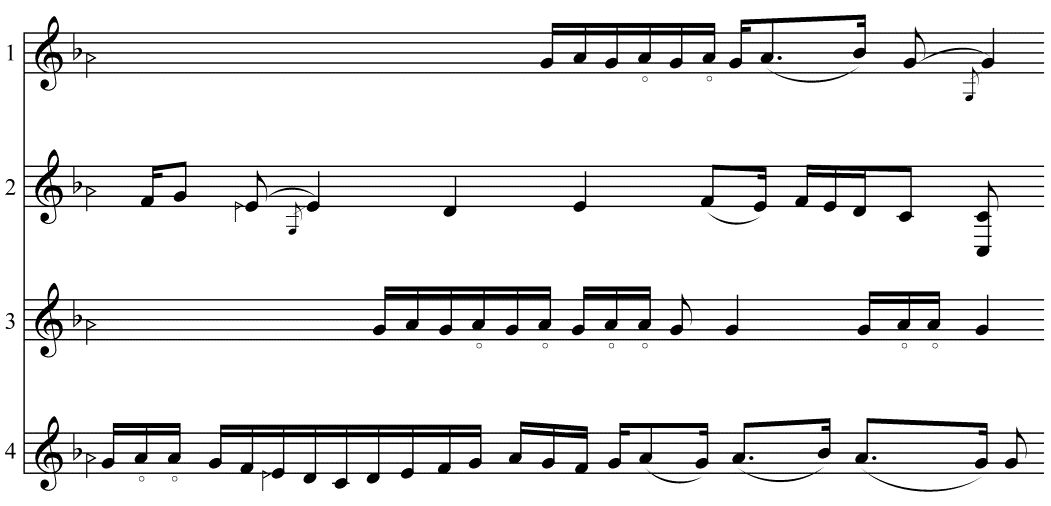
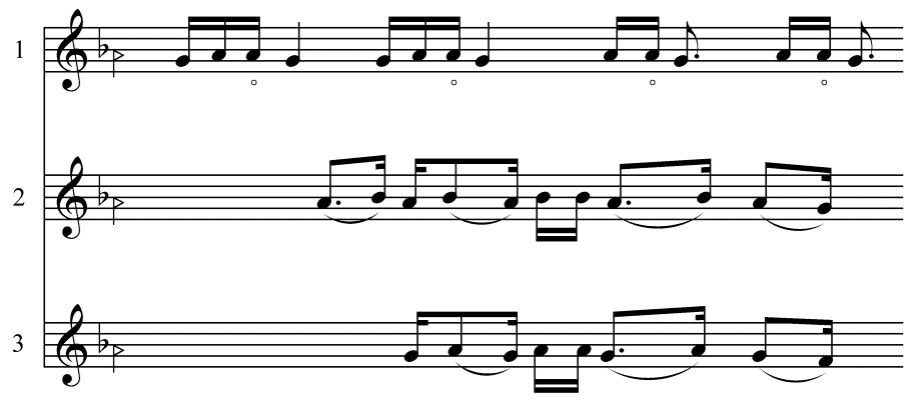
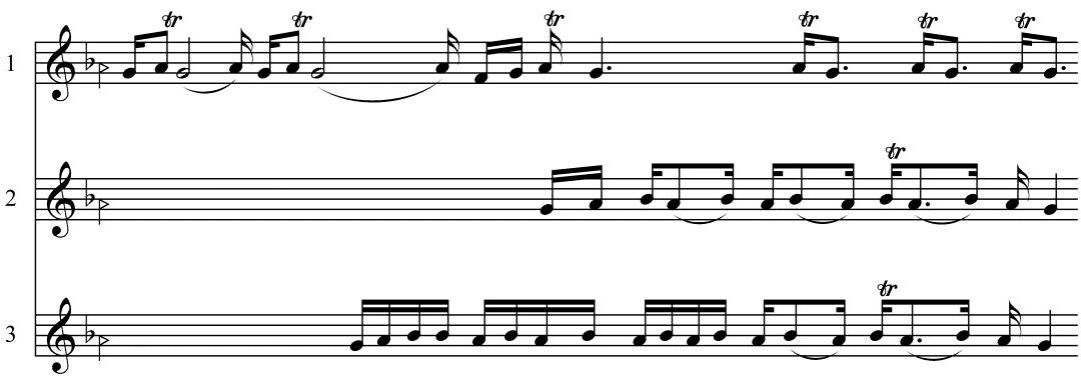




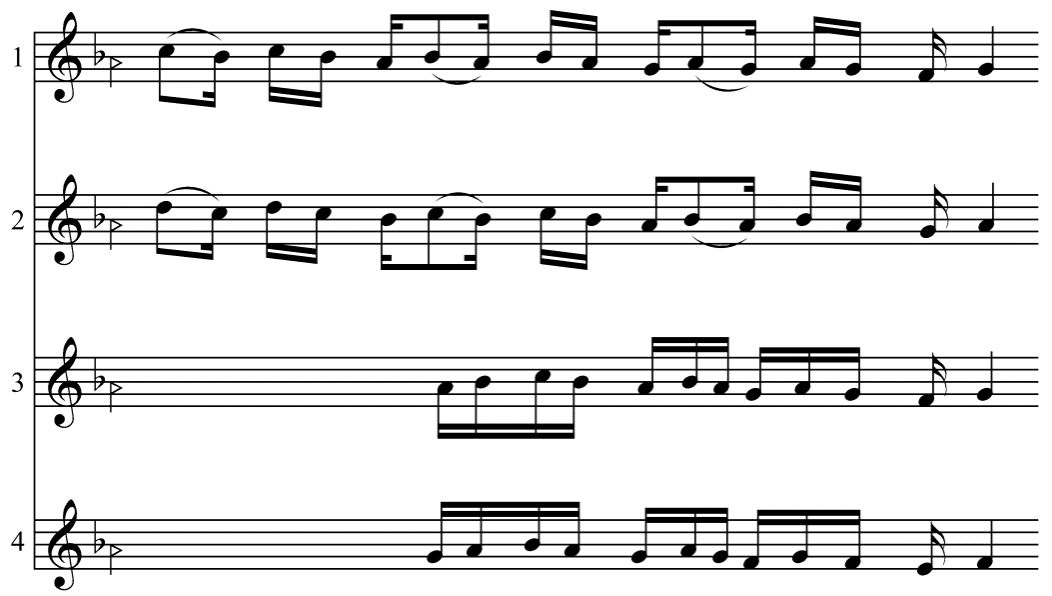
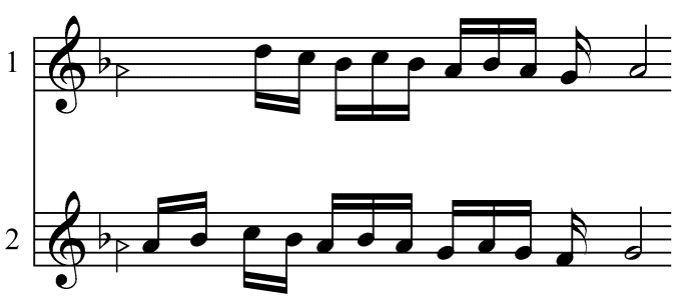
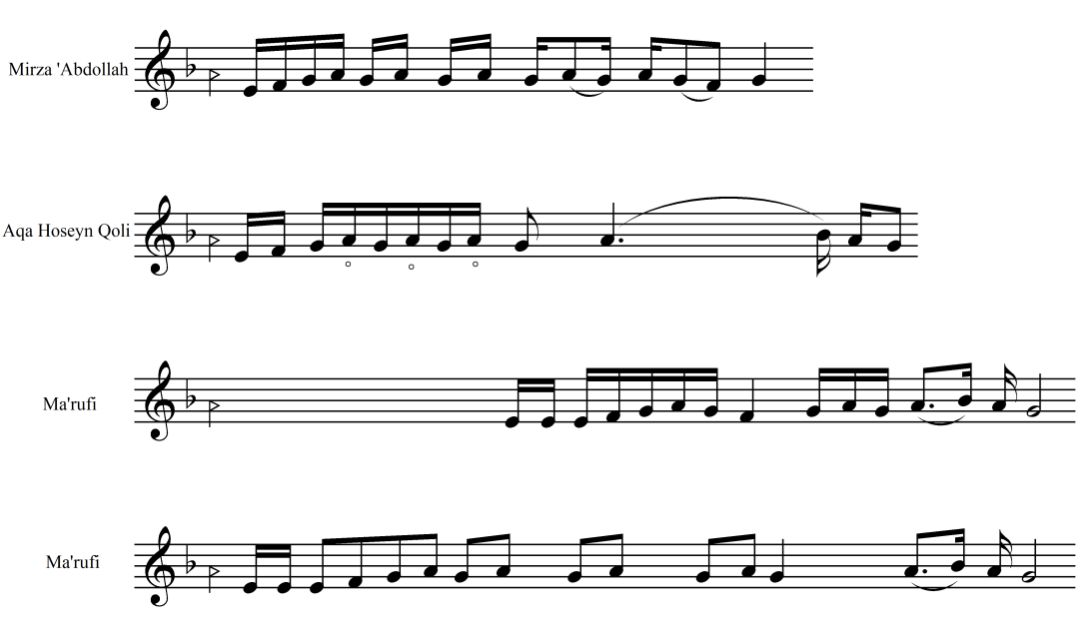



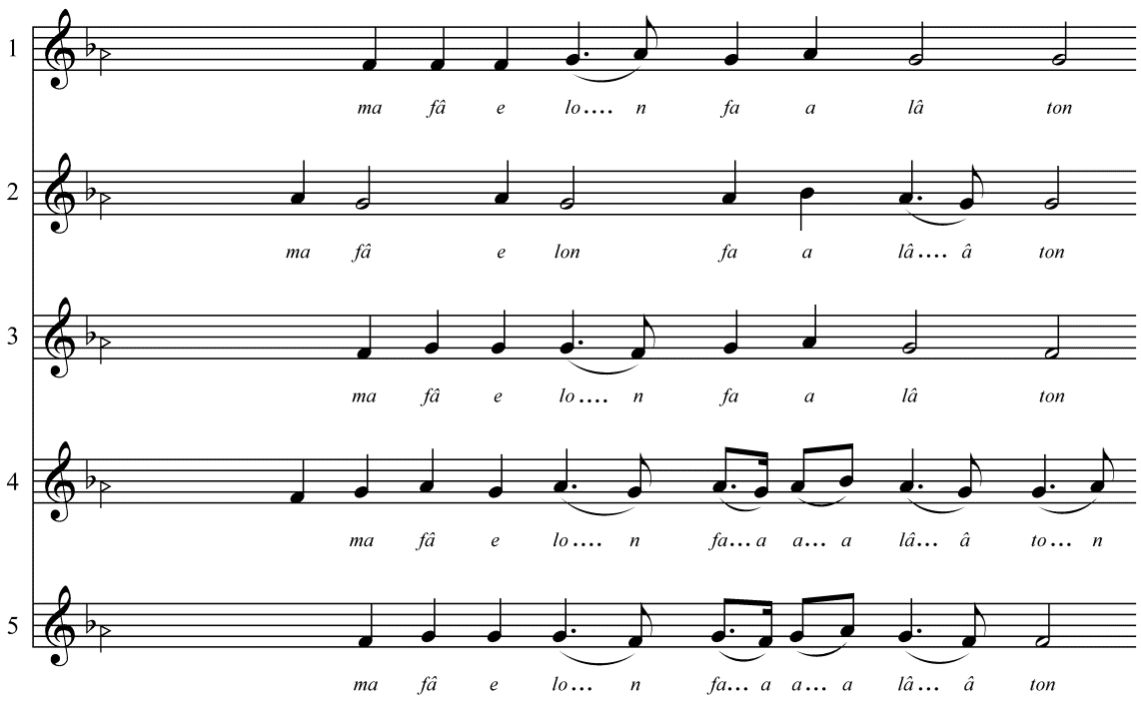



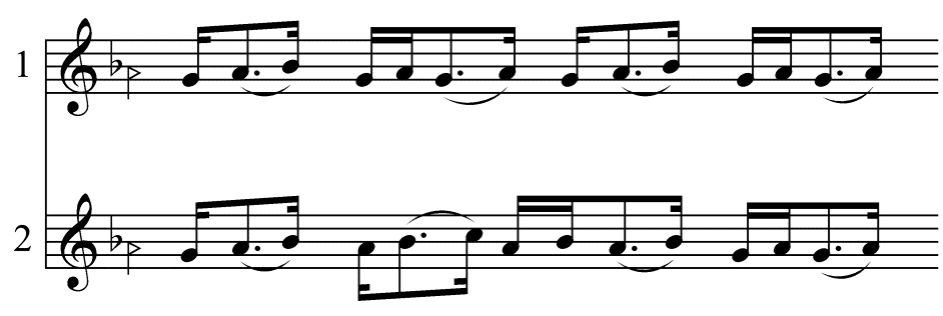





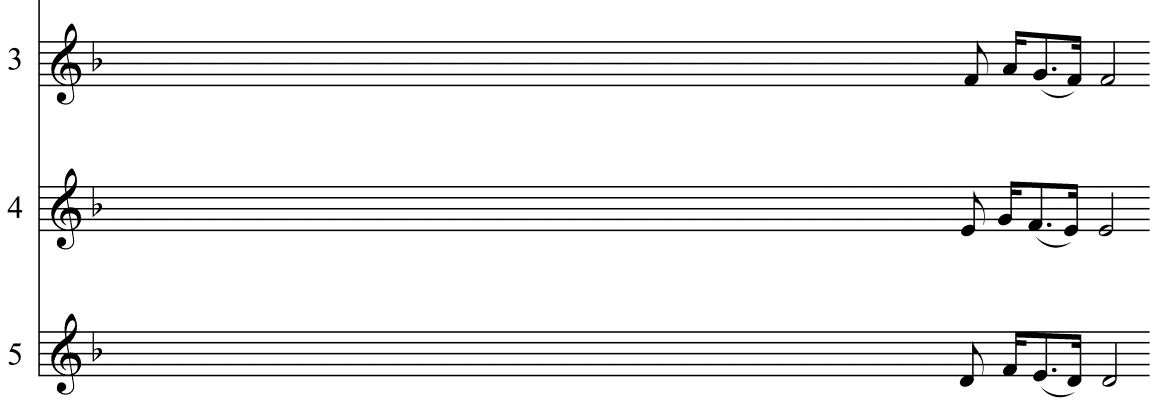

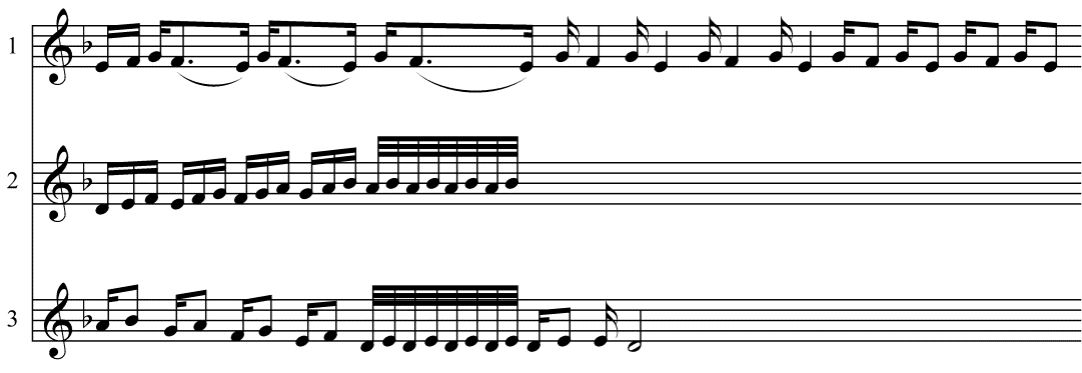
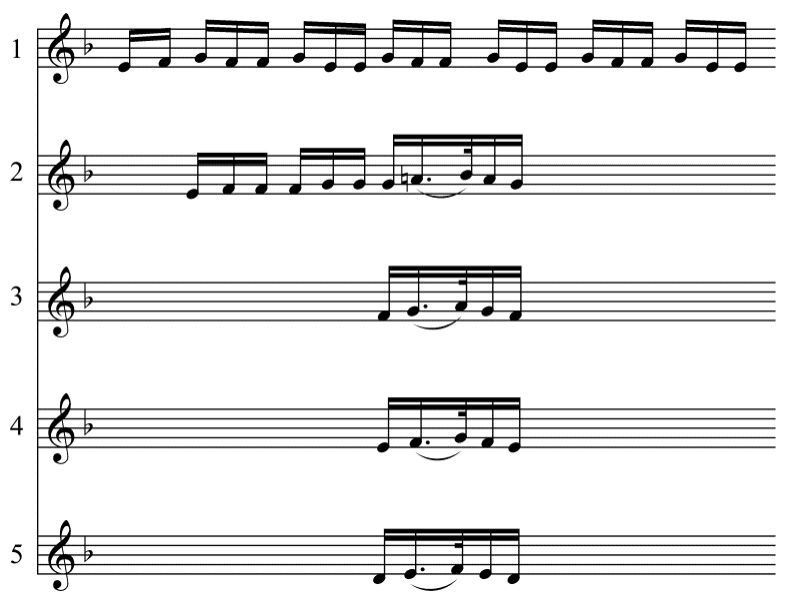
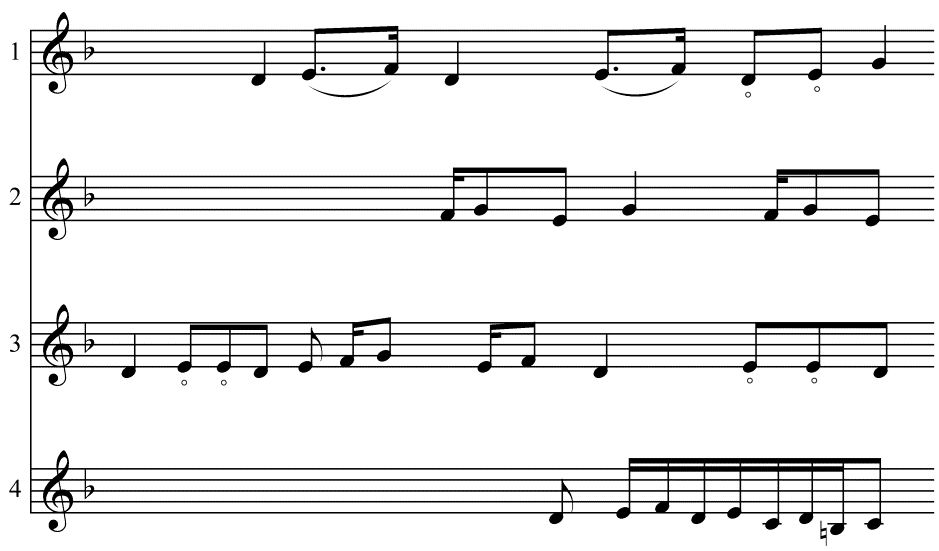
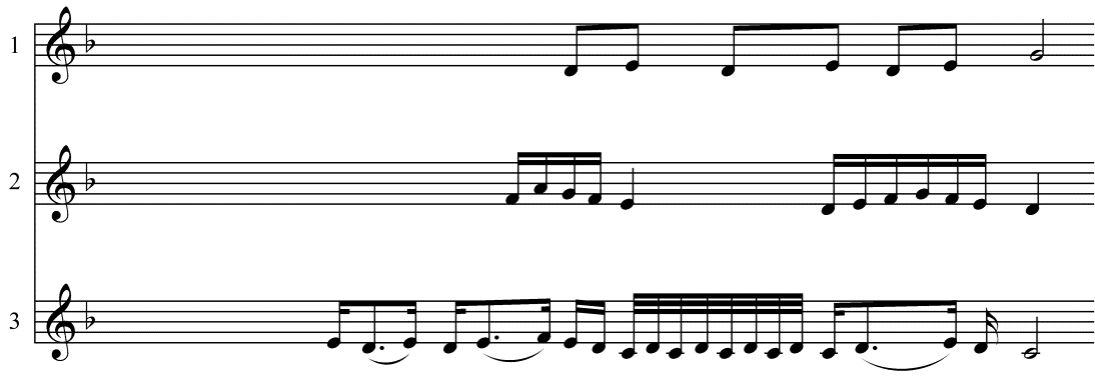


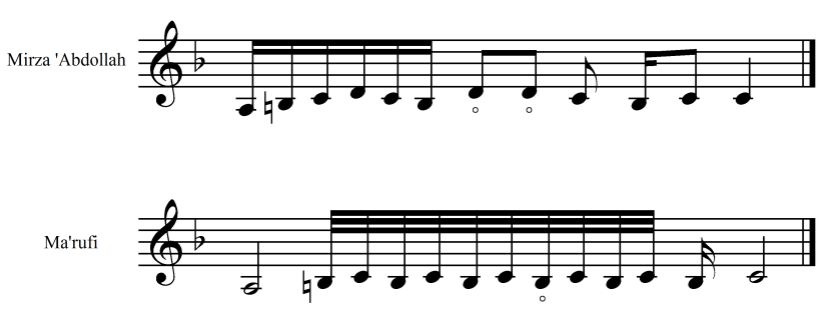

 , lowers approximatively of 1/4 tone [This is an added footnote not present in the original].
, lowers approximatively of 1/4 tone [This is an added footnote not present in the original].